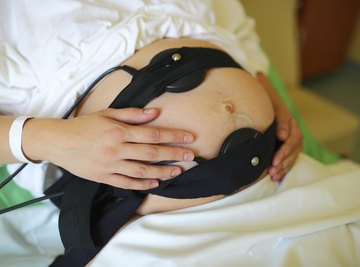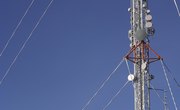
Ultrasonic sensors are defined as electronic devices that emit an acoustic wave beyond the upper range of human hearing -- called the audible range, between 20 hertz and 20 kilohertz – and determine the distance between the sensor and an object based on the time it takes to send the signal and receive the echo. Ultrasonic sensors have many applications, including: parking assistance sensors in cars, proximity alarms, medical ultrasounds, generic distance measurement, and commercial fish finders, among other applications.
Basic Ultrasonic Sensor Operation
To generate the ultrasonic wave, ultrasonic sensors use a vibrating device known as a transducer to emit ultrasonic pulses that travel in a cone-shaped beam. The range of an ultrasonic sensor is determined by the frequency of vibration of the transducer. As the frequency increases, the sound waves transmit for progressively shorter distances. Conversely, as the frequency decreases, the sound waves transmit for progressively longer distances. Thus, long-range ultrasonic sensors work best at lower frequencies, and short-range ultrasonic sensors work best at higher frequencies.
Configuration is Essential
Ultrasonic sensors come in a variety of configurations and typically use one or more transducers, depending on the application. In the case of an ultrasonic sensor having multiple transducers, spacing between the transducers is an essential characteristic to consider. If the transducers are spaced too closely together, the cone-shaped beams emitted from each may cause unwanted interference.
The Blind Zone
Ultrasonic sensors typically have an unusable area close to the face of the sensor, known as a “blind zone,” and if the beam completes a detection cycle before the sensor completes its transmission, the sensor cannot accurately receive the echo. This blind zone determines the minimum distance an object must be from the ultrasonic sensor for the device to give an accurate reading.
Ultrasonic Sensor Best Practices
Ultrasonic sensors work best when positioned in front of materials that readily reflect ultrasonic waves, such as metal, plastic and glass. This enables the sensor to give an accurate reading at a greater distance from the object in front of it. However, when the sensor is placed in front of an object that readily absorbs ultrasonic waves, such as fiber material, the sensor must move closer to the object to give an accurate reading. The angle of the object also has an impact on the accuracy of the reading, with a flat surface at a right angle to the sensor offering the longest sensing range. This accuracy decreases with a change in the angle of an object in relation to the sensor.
References
About the Author
Jonathan Marker is an aerospace analyst and graduate of Embry Riddle Aeronautical University. A current MA candidate in military studies at American Military University, he has written hundreds of articles on a wide range of general science, aviation and history topics. Marker is currently working on several science fiction projects.
Photo Credits
joruba/iStock/Getty Images
